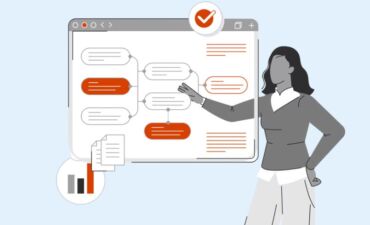Today, we’ll explore possible accounting effects of the coronavirus on fair value measurements under Topic 820, Fair Value Measurement.
Definition of Fair Value
Fair value is the price that an entity would receive to sell an asset (or pay to transfer a liability) in an orderly transaction that occurs as of the measurement date between market participants in the principal market (or most advantageous market) for the asset or liability. For nonfinancial assets, fair value is determined based on an asset’s highest and best use.
The coronavirus disease 2019 (COVID-19) is throwing a wrench into fair value measurements. Even the basic definition of fair value requires a closer look. In particular, let’s revisit the following concepts:
- Orderly transactions: Fair value is based on orderly transactions. A transaction is not orderly if it is forced (such as a distress sale or forced liquidation). Companies in many industries are showing signs of financial strain, such as hotels, restaurants, airlines, cruise lines, construction entities, oil and gas companies, and theme parks. As such, distress sales and forced liquidations may become more common.
- Measurement date: A fair value measurement must be determined as of the measurement date. Recent market volatility highlights the importance of determining fair value on the right date. The biggest point drop for the Dow Jones Industrial Average in history occurred on March 16, 2020 with the Dow dropping a whopping 2,997 points. Just today, the Dow shot up over 2,100 points. With these swift and dramatic movements, prices become stale extremely quickly. Therefore, it is crucial to determine fair value as of the measurement date.
- Market participants: Fair value must be based on the assumptions market participants would use. Market conditions are changing daily, making it difficult to pinpoint the assumptions a market participant would use. To obtain information about market participants, you are not required to undertake exhaustive efforts, but must consider reasonably available information. Be sure to document your conclusions, along with the basis for those conclusions.
- Principal or most advantageous market: Some common channels for selling goods and services have been shut down or impeded. For instance, retailers have been required to shutter physical stores temporarily to prevent spread of the virus. Could the principal or most advantageous market for your asset or liability have changed? Also, prices may differ in the principal market versus the most advantageous market. Be sure you follow Topic 820 to consider the price in the appropriate market. Generally, you have to use prices in the principal market, even if the price in another market is more advantageous at the measurement date.
- Highest and best use: A fair value measurement for a nonfinancial asset considers the asset’s highest and best use. The coronavirus is forcing companies to repurpose assets. For example, some cruise lines and hotels have offered their facilities as makeshift hospitals. Manufacturers have revamped equipment to help supply health care workers with medical essentials. Could the highest and best use of your asset have changed? The highest and best use is determined based on the perspective of a market participant. The highest and best use must be physically possible, legally permissible, and financially feasible. The way a reporting entity is currently using a nonfinancial asset is assumed to be the highest and best use, unless factors suggest otherwise. At the moment, no one can foresee how long the pandemic will last or how long its effects will linger. We could start to see a light at the end of the tunnel in a few weeks. Or conditions could worsen or persist for months. As of today, it may be too soon to conclude that your highest and best use is different… but will that always be the case?
Valuation Approaches, Techniques, and Inputs
We can’t discuss the accounting effects of the coronavirus on fair value measurements without digging deeper into valuation approaches, techniques, and inputs.
Fair value generally is determined using one of the following valuation approaches:
- A market approach;
- A cost approach;
- An income approach (such as a present value technique).
An entity also must determine the appropriate inputs for its valuation technique (such as discount rates, credit risk, expected cash flows, and bid/ask prices). Topic 820 requires an entity to maximize the use of observable inputs and minimize the use of unobservable inputs. Unobservable inputs must be developed using assumptions a market participant would use.
In light of the coronavirus, remember the following:
- Valuation techniques: Which assumptions would a market participant use? Are those assumptions incorporated into your valuation technique? Are you missing something? Also, when is the last time you calibrated your valuation technique? Calibration is important to make sure your valuation technique reflects current market conditions. Calibration can also help you identify a missing element. A reporting entity generally must apply the same valuation technique consistently each reporting period. However, certain factors may warrant a change in the valuation technique, such as a shift in market conditions, an improvement in valuation techniques, or information that is no longer available. A change in a valuation technique is accounted for as a change in accounting estimate (although the disclosures in Topic 250, Accounting Changes and Error Corrections, for a change in accounting estimate are not required).
- Discount rates: Discount rates typically are determined by taking a risk-free rate and adding a risk premium for uncertainty and illiquidity. The Federal Reserve has made emergency rate cuts in recent weeks, lowering risk-free rates. At the same time, uncertainty is through the roof. Make sure to involve your actuaries in determining suitable discount rates that incorporate appropriate risk-free rates and risk premiums.
- Credit risk: Today’s economic landscape reminds some of the 2008 financial crisis. Many companies the world thought were too big to fail are suddenly under severe strain. Industries that were booming weeks ago are now lobbying for a government bailout. Gauging the level of credit risk associated with an asset may be difficult. And remember that an entity must consider nonperformance risk (including its own credit risk) when measuring the fair value of its liabilities as well.
- Expected cash flows: Reporting entities must revisit expected cash flow assumptions. For instance, if you are using a present value technique to measure the fair value of a debt instrument, have the expected principal or interest payments changed? This includes both the timing and the amount of the payments. For instance, a debtor under financial strain may take longer to make a payment. Also, you may need to revise the amount of expected interest payments on a variable-rate debt due to recent changes in market interest rates.
- Bid and ask prices: A number of valuations (such as commodities or financial instruments) may use bid and ask prices as inputs. Substantial differences may exist between bid and ask prices. For instance, sellers of oil hoping for a market rebound may set asking prices well above the bid prices buyers are willing to pay. It may be difficult to determine the price within the bid-ask spread that is most representative of fair value. Topic 820 permits, but does not require, the use of bid prices for asset positions and ask prices for liability positions. Topic 820 also allows the use of mid-market pricing or another method used by market participants to determine fair value within the bid-ask spread.
- Significant drops in market activity: The volume or level of market activity may have significantly decreased for a particular asset or liability. As a result, an adjustment to a transaction or quoted price may be necessary (such as a risk adjustment). The adjustment could be significant to the fair value measurement. It also may be appropriate to update your valuation technique or use multiple valuation techniques.
- Costs: Transaction costs are not factored into a fair value measurement. Transportation costs, however, must be considered if location is a characteristic of the asset (such as for a commodity) and transportation costs would be incurred to move the asset from its current location to market. If transportation methods and routes are impacted by the coronavirus, this may also affect the amount of transportation costs that need to be reflected in the fair value measurement.
- Use of third parties: Many companies get quoted prices from third parties. Make sure you have processes and controls in place to evaluate the valuation methods and inputs used by third parties. A reporting entity must ensure that the quoted prices have been developed according to Topic 820. In particular, ask your third party vendors how they’ve considered the effects of COVID-19.
When performing valuations, make sure to document the basis for your conclusions. Having adequate supporting documentation for assumptions, estimates, and judgments is critical.
Topic 820 provides some practicability exemptions. For instance, an entity is not required to measure the fair value of a financial instrument for which it is not practicable to do so or a nonmonetary asset for which fair value is not reasonably determinable. Under current circumstances, you may have additional assets or liabilities for which fair value cannot be determined.
As a practical expedient, Topic 820 also permits an entity to estimate the fair value of certain investments using the net asset value per share (or its equivalent). Companies may need to convert assets to cash. You can’t use the practical expedient to measure an investment at net asset value per share if, as of the measurement date, it is probable you will have to sell the investment for a different amount. Topic 820 specifies criteria under which a sale would be considered probable.
The accounting effects of the coronavirus on fair value measurements may be significant. COVID-19 is a rapidly evolving situation. In the coming weeks and months, we may witness additional accounting effects as the full impact of this disease manifests itself. We encourage you to stay informed on accounting and financial reporting developments.









